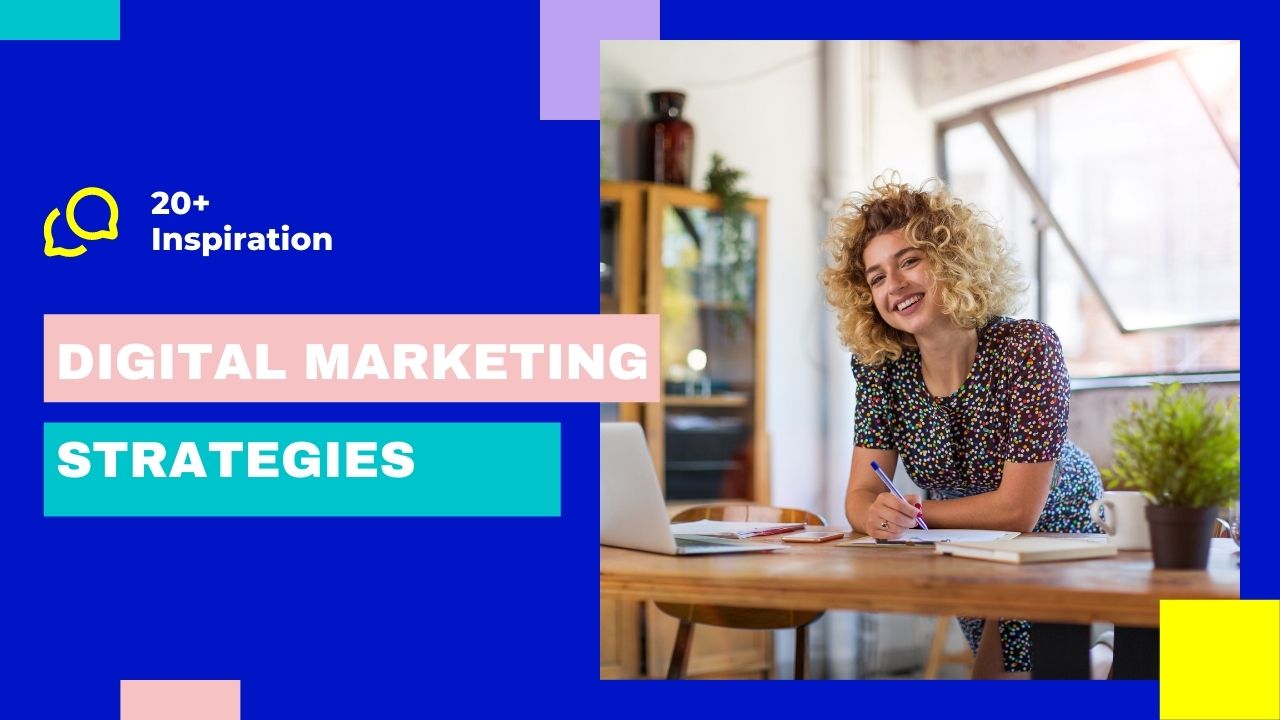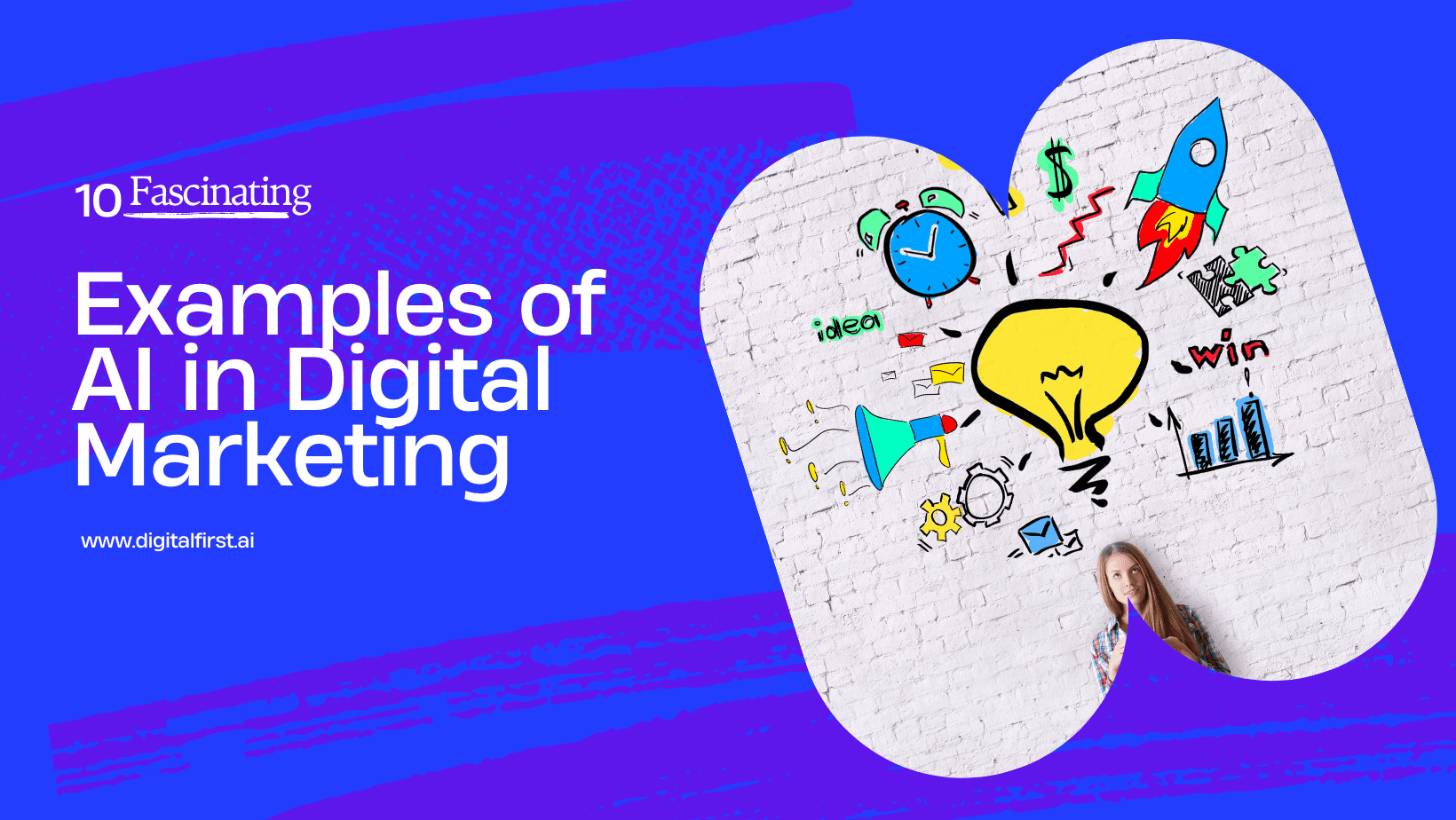Digital Marketing Strategies: What Are They & 20 Inspirations To Get You Started
Learn what digital marketing strategies are and get 20 examples to inspire your next online marketing campaign.
Sonu kalwar
Share:
If you’re reading this, you have a basic understanding of what digital marketing is, but let’s quickly clarify so we are all on the same page. Digital marketing is a type of marketing that is focused on using online channels to deliver a message to your target audience.
Examples of these channels include search engines (Google, Bing), social media platforms (Facebook, LinkedIn), e-mail campaigns, and websites to reach potential customers and convince them to buy your product or service.
Digital marketing, or growth marketing isn’t just about generating leads and sales for your business; it can also be used as a way to build brand awareness, retention and credibility. At its core, digital marketing works because it builds trust with potential customers in much the same way traditional advertising used to in print publications and television commercials.
Digital marketing strategies play a very important role in bringing the company to the next level. This is because it is the main thing that drives actions, and also tracks results. According to Content Marketing Institute, 75% of marketers increased their company’s credibility and trust with digital marketing tactics.
Try Digital First AI's Plug & Play AI-Powered Marketing Workflows Builder

No credit card needed. Instant access. Try now for free.
List Of Digital Marketing Strategies That Actually Work
Content Marketing
Content marketing is a strategic marketing approach focused on creating and distributing valuable, relevant, and consistent content to attract and retain a clearly-defined audience — and, ultimately, to drive profitable customer action. According to Hubspot, 82% of marketers actively use content marketing.
But it's not just about keeping up with the Joneses: content marketing also makes business sense! In fact, according to the Showpad report, Content Marketing creates three times as many leads as traditional marketing and costs 64% less.
And that's not all. According to the same report, companies who are doing content well are seeing higher ROI on their digital marketing efforts by focusing on quality over quantity. Content marketing has many forms. It can be visual (like infographics or videos), written (like blogs or articles), downloadable (like ebooks or design templates), or purely educational (like webinars). No matter what form it takes, the goal of content marketing is always to help your audience solve a problem.
Content Marketing Examples For Inspiration
Hubspot (E-Books)
HubSpot is a leading marketing automation tool for small to large businesses. One of the reasons HubSpot has been successful at sharing advice with businesses is because they publish eBooks. eBooks are a great way to share information with your audience that you want to educate them on.
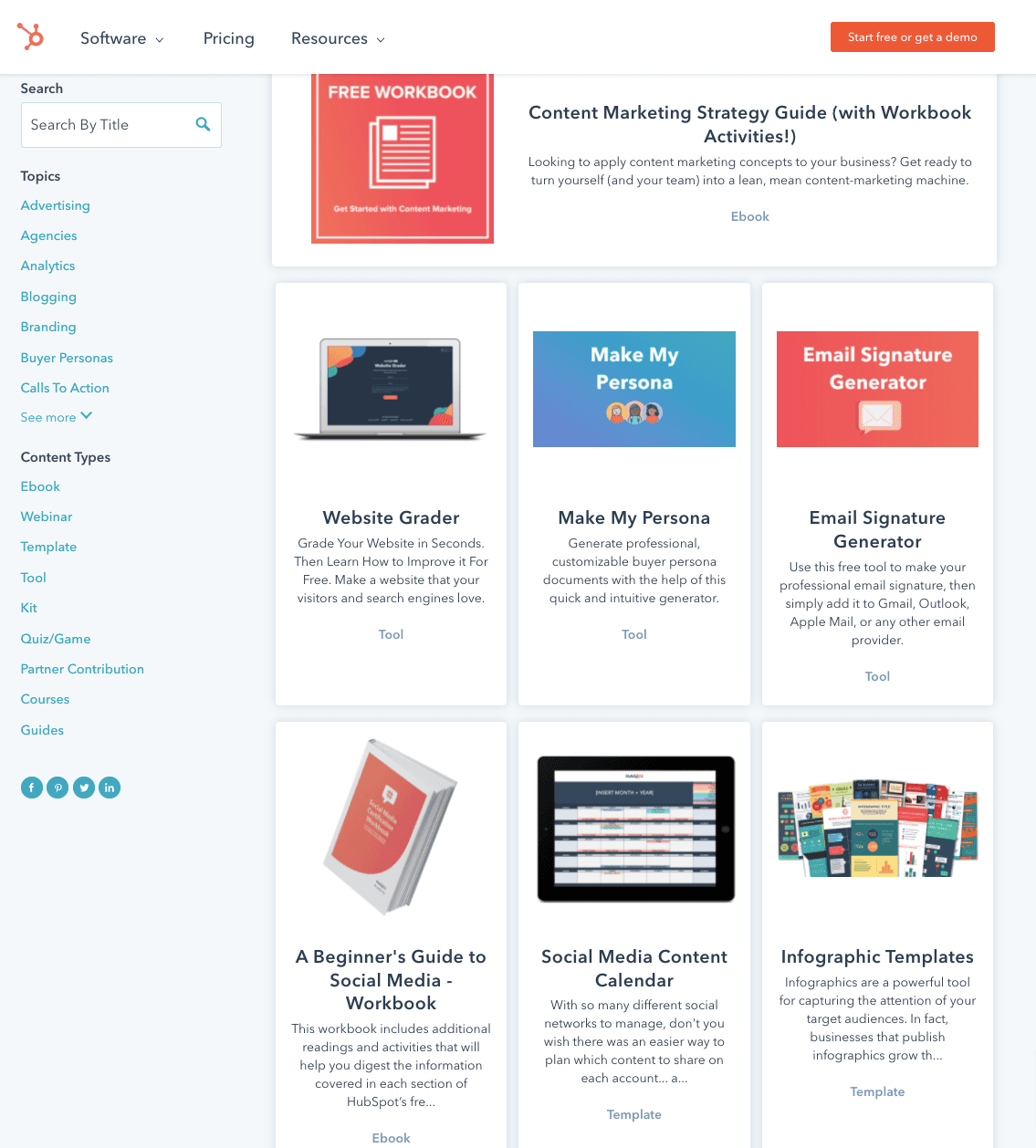
Wordstream (Blogs)
Despite the fact that Wordstream is a well-established marketing agency, they've also done a great job of creating and curating public-facing content. They've produced content within their niche that has provided millions of website visitors with value, even if they've never bought anything from them.
Wordstream's approach to content marketing can be seen in their blog, which covers topics like SEO, PPC, and Content Marketing. The best part? This blog is free to access for anyone who's interested in learning more about these strategies. It's a great way to establish Wordstream as an authoritative source in their industry while also providing readers with valuable information—all without having to spend a cent!
In March 2022, Wordstream's monthly organic traffic reached 832,775 which is 99% of the total traffic.
By producing high-quality content that provides real value for their audience, Wordstream has been able to build trust with potential customers who may not have ever heard about them before visiting their site."
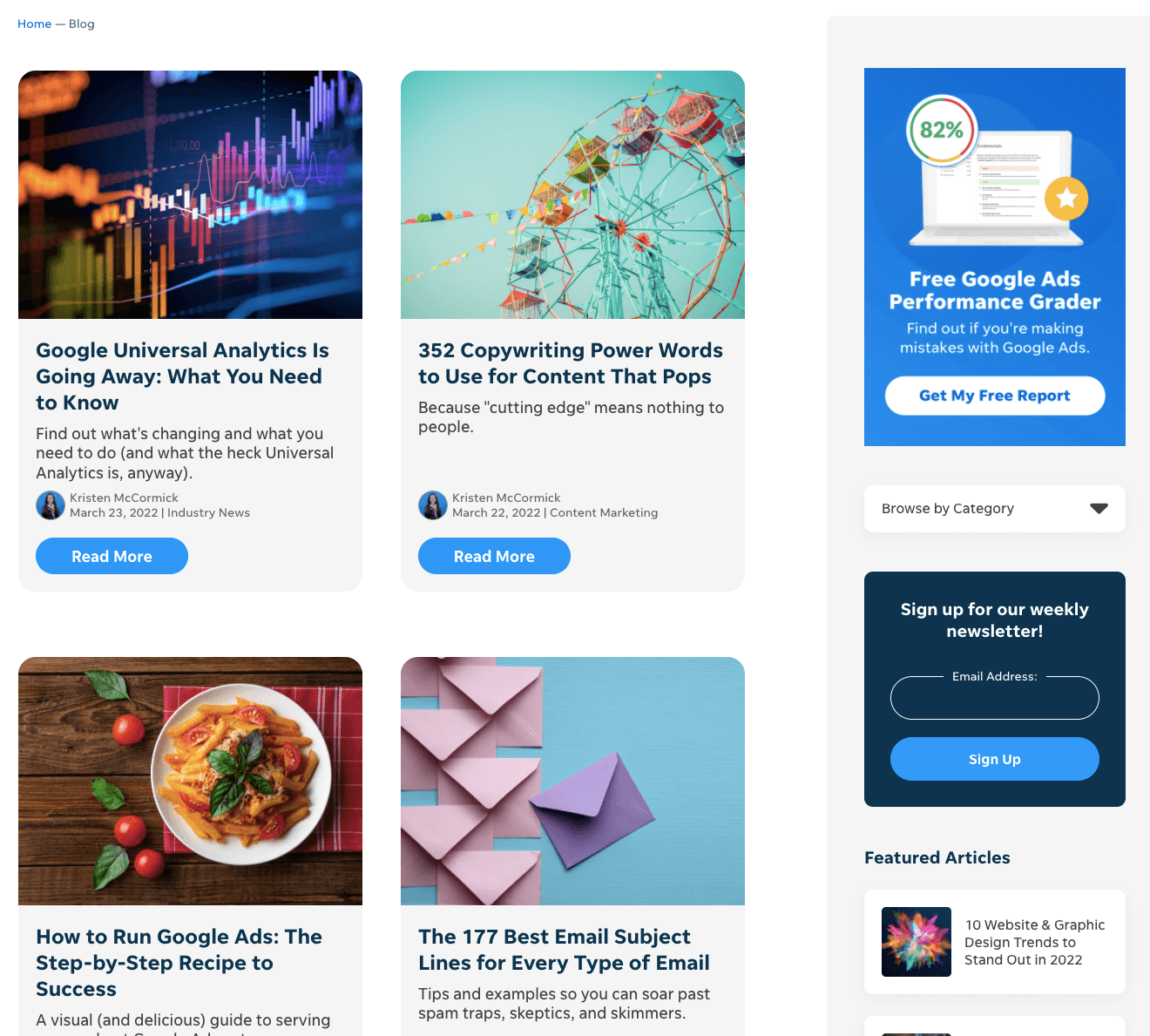
Datamatics (Whitepapers)
Datamatics, a data analytics company that builds intelligent solutions for data-driven businesses to enhance their productivity and customer experience has produced a variety of content marketing assets. For several projects, the team has written educational white papers that would help the company's prospective customers better understand their industry and the technologies they use.
Datamatics content team has crafted & produced several contents that would position them as thought leaders in their industry and help them reach their target audience. The team then developed and executed this strategy by writing multiple white papers on topics such as artificial intelligence, cloud computing, and big data.
Additionally, Content Strategy helped Datamatics increase thought leadership through blog posts, social media posts, and videos that all referenced or were based on the whitepapers.
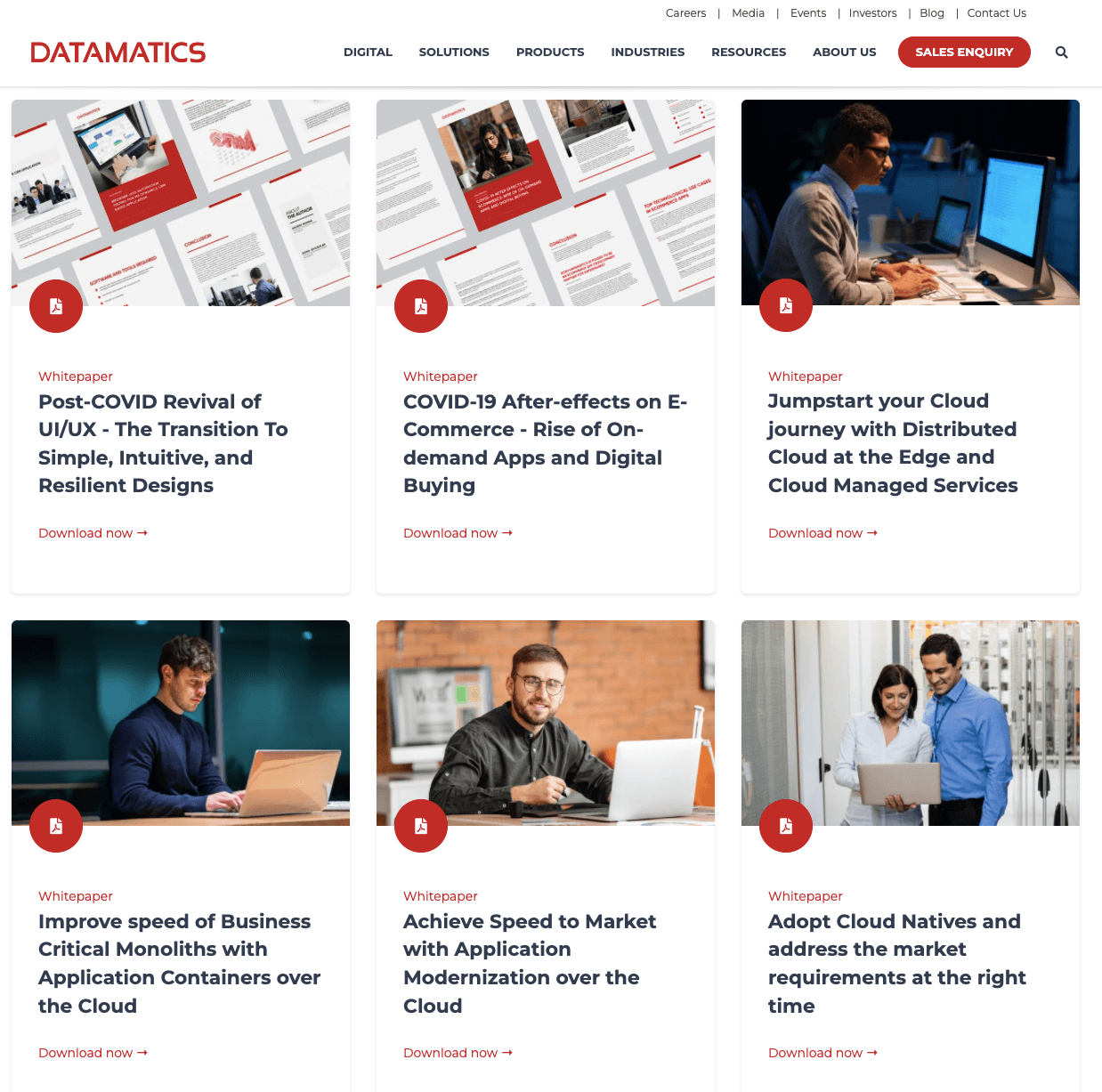
Affiliate Marketing
Affiliate marketing is a revolutionary tool that helps you build brand awareness, expand your customer base, and grow your business—and all for zero dollars. That's right, it's totally free to get started. And well for the right reason, according to a study conducted by Uiqodo, affiliate marketing drives 16% of all e-commerce orders and 10% of all revenue for brands.
So how does it work? Let's say you have a product you think might be interesting to people in the tech industry. You could send out a bunch of tweets about said product… but if no one follows you or retweets your stuff… what good does that do? Wouldn't it be better if someone who already has a big following in the tech industry promote your product instead?
That's what an affiliate is: someone who partners with your company and promotes your products (on their blog or Instagram account or YouTube channel), then gets paid when they make a sale (based on their commission). By partnering with affiliates who already have audiences in your target market.
So What Are Some Benefits Of Affiliate Marketing?
It increases your brand's visibility
When you have affiliates promoting your product or service, you're getting in front of people who might not have heard of you before. This is especially true if these affiliates are doing influencer marketing for you, since their audiences may be different from yours.
It's a low-cost way to gain new customers
Compared to other forms of online advertising, affiliate marketing is one of the least expensive ways to garner new business. The only cost associated with affiliate marketing is paying the affiliates themselves—but they're paid only when they get results (i.e., when they make a sale).
It helps you test ideas and gets feedback
By leveraging a network of affiliates, you can try out new ideas without making significant investments in them (and without impacting your bottom line if they don't work). For example, if you want to test out a new product but aren't sure how it will perform, working with an affiliate might be a good move since it allows you to scale up your efforts quickly and at low cost, if it takes off—or abandon it just as quickly if it doesn't!
Affiliate Marketing Examples For Inspiration
Amazon
Amazon is one of the most famous affiliate programs out there. The Amazon Associates program has evolved over time, but their basic mission has remained the same: to help affiliates bring in conversions and to offer flexibility to their affiliates while still staying on brand.
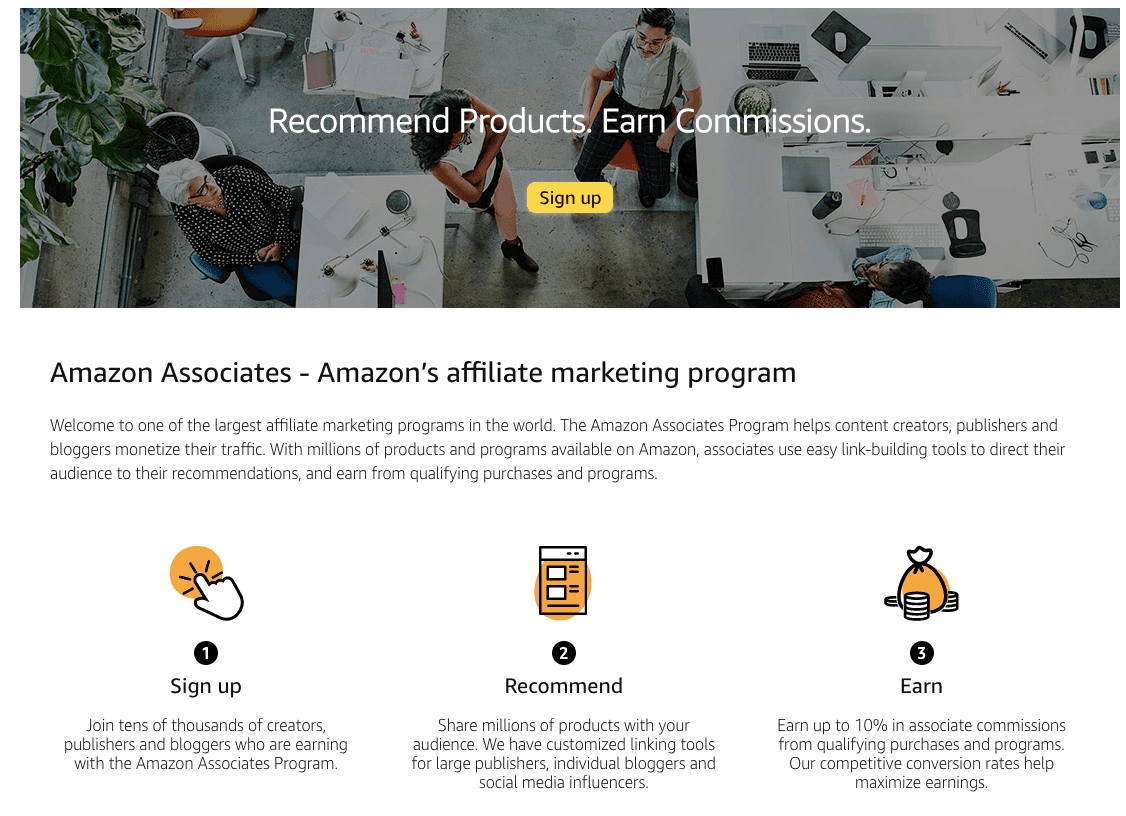
There are millions of products for affiliates to promote, with different categories offering different commission levels. There are also several linking tools that can be used depending on the size of the site or social media channel. When an affiliate link is followed and a customer adds a product to their cart, the affiliate earns a commission on the entire cart.
Leadpages
Generating leads is one of the most challenging aspects of growing a business. It's why so many companies turn to Leadpages, it is one of the popular growth hacking tools that lets you create, optimize, and track the success of landing pages, pop-ups, lead bars, and other lead forms in minutes. The company also has an Affiliate Program that pays affiliates up to 50% in recurring commissions on sales they refer to Leadpages. The program is backed by a time-tested product that’s easy to sell and offers tiered commissions that reward affiliates for their sustained efforts.
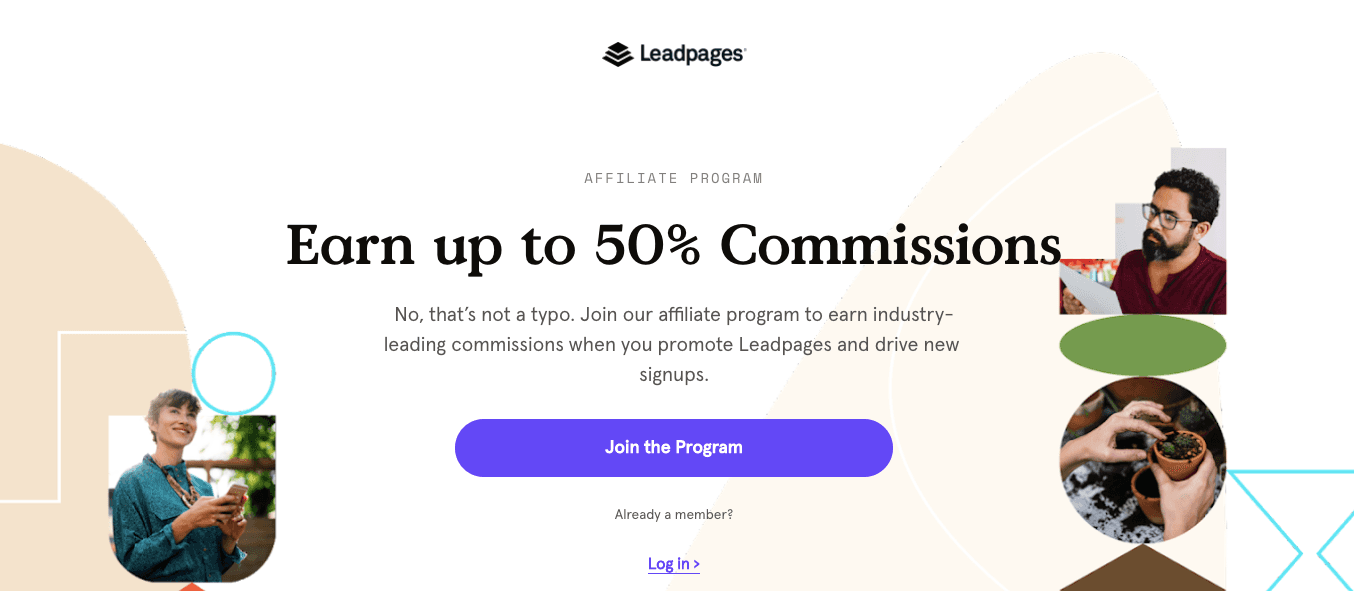
Leadpages Affiliates enjoy: A 10-50% recurring commission (applied to renewals and upgrades, as well as initial purchases) helps motivate affiliates Tiered commissions: The more conversions an affiliate makes in a month, the higher their total monthly commission rate (40% when monthly sales via their link are over $50; 50% when monthly sales are over $3,000).
Hostgator
HostGator is a web hosting company that provides WordPress web hosting for businesses and personal brands of all sizes. Its affiliate program is famous in the WordPress hosting space for its tiered commission scale and attractive earning potential. The more sales an affiliate refers to in a given month, the higher their commission on each sale will be. The HostGator affiliate program promotion page includes an example of how much affiliates can earn per sale, which motivates them to sign up.

The promotion page also explains the entire process in three steps, including how to get started with HostGator's dedicated affiliate team. This helps prospective affiliates understand just how easy it is to join and use the program. The terms and conditions of the affiliate program are easily accessible right from the promotion page, too. All-in-all, this is an excellent example of how to promote your affiliate marketing programs and encourage people to join your team.
Email Marketing
Email is more than just a channel to send messages to your customers. It's an opportunity—a chance to connect with them in a way that goes beyond what you can get from social media, the phone, or even in-person meetings. We know that email marketing works and continues to be wise investment year after year. In fact, for every $1 spent on email marketing, you'll get $38 back in return. That's an incredible 3,800% ROI.
Why is this? Well, because email offers you a personal way to reach customers that other channels don't. And when done well, it can help build relationships with your customers and increase loyalty toward your brand. We'll show you seven more reasons why email marketing is a must-have in your digital marketing strategy — including tips and examples from some of the world's top brands.
What's the difference between email and social media marketing? Both are incredible ways to reach your audience, but they're different in a few key ways.
One major difference is reach. An email has a worldwide reach of 4.2 billion, according to a report from Radicati. In comparison, Facebook only has 2.13 billion users as of January 2018, per Statista. So if you want to reach as many people as possible with your marketing campaign, email is the way to go.
Also, when you post on Facebook, there's no guarantee that anyone will see it—Statista reports that only about 2% of your fans will ever see your posts in their News Feeds. On the other hand, 90% of email gets delivered to the intended recipient’s inbox, according to Convince & Convert.
Another difference: conversions! Monetate found that 4.24% of visitors from email marketing buy something as compared to 2.49% of visitors from search engines and 0.59% from social media.
Email also tends to be an easier channel for consumers: 94% of online adults use email, while only 81% use Facebook
Email Marketing Examples For Inspiration
Buzzfeed
Buzzfeed is one of the most visited sites on the planet. That's because they're more than just fun quizzes and puppy GIFs—they also have a thriving email marketing program that leverages automation. BuzzFeed does more than just share puppy GIFs. They've leveraged email marketing to create a thriving business.

Source: Buzzfeed
They have over 20 email newsletters that cater to specific audiences, and email is one of their top 5 referrers to their website. It's also the channel with the highest engagement rates: visitors from email spend three minutes longer on their website than those from other channels.
One of our favorite examples of how BuzzFeed uses automation in their emails is the educational courses. They automate their “4-Week Get Fit Challenge.” When a subscriber signs up for the course, they get a series of emails with tips on how to get in shape.
Litmus
Thanks to the zillion emails we get every day, consumers are less likely than ever to actually read your marketing messages. That's why it's so important to find creative ways to catch their attention—like with animation. In this campaign, Litmus uses a simple motion GIF that provides a clear and novel demonstration of how their email tool can help users. It catches the reader's eye, and gives them a very clear idea of how they might benefit from using the product.
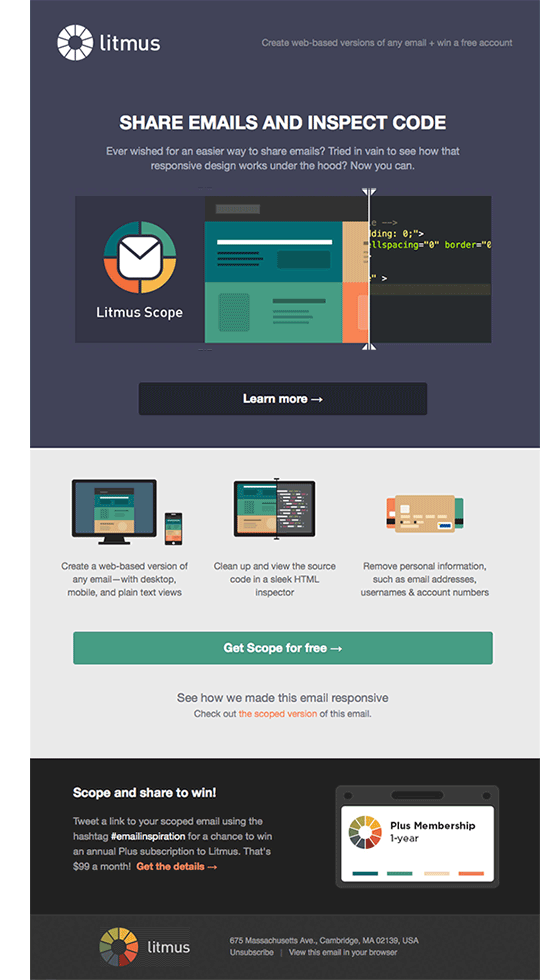
Search Engine Optimization
For the first time in history, SEO became a top priority for every business that wants to survive and thrive. As consumers shifted en masse to online, even the most traditional business realized that they need to accelerate the shift to digital.
According to Brightedge, 68% of online experiences begin with a search engine. It also reported that SEO drives 1000% more traffic than organic social media. It's clear that if businesses want to get ahead in SEO, they need to start thinking about how they can implement SEO strategies into their marketing plans.
We've said it before, and we'll say it again: SEO is important. Here's why:
Organic Search Results Still Get More Clicks
This means that if you're not paying attention to your SEO, you're probably not showing up on Google at all. That's a huge loss for your business—you could be missing out on tons of potential customers who are searching for things you offer!
People Trust Google
This is because the very first search engine optimization strategy was to provide useful information in an easy-to-find place. This means when people find what they're looking for on your site, they see your business as trustworthy and credible. It's basically a direct link between consumer confidence and SEO success!
High Purchase Intent
When people search for a product or service using specific keywords, they are telling you what they want. What do you do? You give it to them! That's how you meet your customer's needs by delivering content that answers their questions, addresses their pain points, and provides value.
SEO Examples For Inspiration
Canva
If you're anything like me, you probably have a love-hate relationship with design. I mean, it's great when it works and you can create a really attractive and professional-looking layout for your blog post or website. But if you don't know what you're doing, it can be a real pain in the butt. Australian startup Canva knows exactly how that feels.
Their design blog was not performing the way they wanted—and they knew they had to do something about it. So they completely re-engineered their strategy to make sure they were putting out content that would resonate with their audience and help them grow their traffic. They first did a competitor analysis to find out what content performed best. Then they used Buzzsumo to find posts that performed well on social media for any given topic and Quora to figure out what kind of questions people wanted to be answered on their blog.
After just two months of this new strategy, Canva saw a massive uptick in traffic. They went from 150,000 visitors per month to over 400,000! More importantly, those visitors were spending more time on the site and engaging with their content (including commenting!).
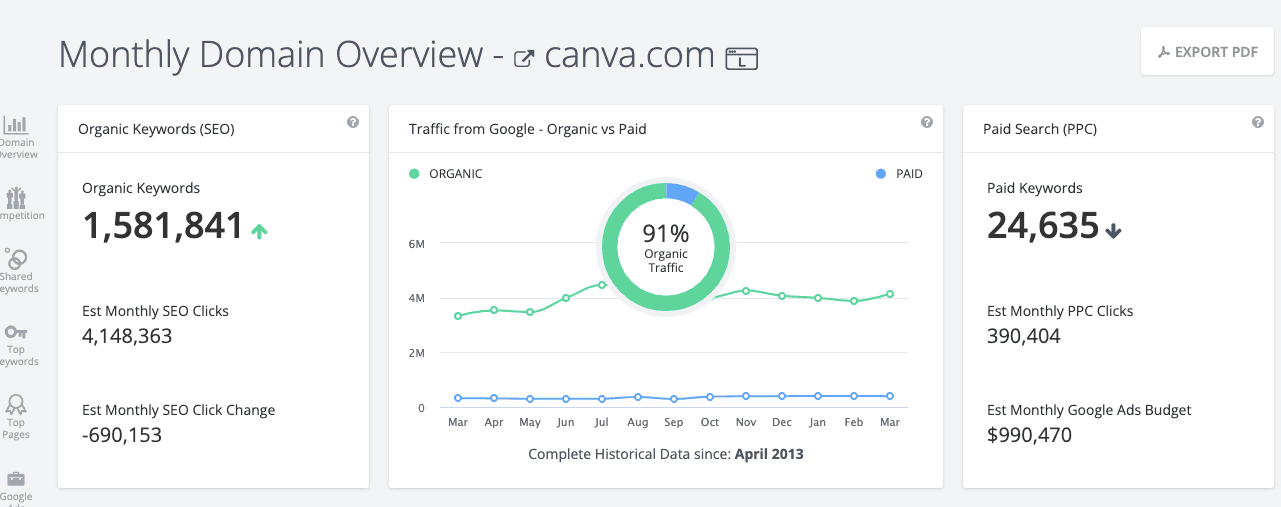
Recent SEO organic report of Canva (25th of March, 2022).
Namecheap
With over nine years in the domain name business, Namecheap has a lot to be proud of. They currently drive 325,084 organic traffic and 273,614 organic keywords. But it wasn't always that way. When they began back in 2007, they were a small company with just two people in marketing and everyone else focused on customer service.
Namecheap's success can be attributed to a few key things—one of which was doing a detailed competitor analysis to find out what content performs best. This analysis revealed the topics that were most popular within their niche and the type of content topics that works well with the target audience. They also found success by creating an internal blog for Namecheap employees, driving engagement by rewarding employees for sharing posts on social media, and by regularly posting relevant content.
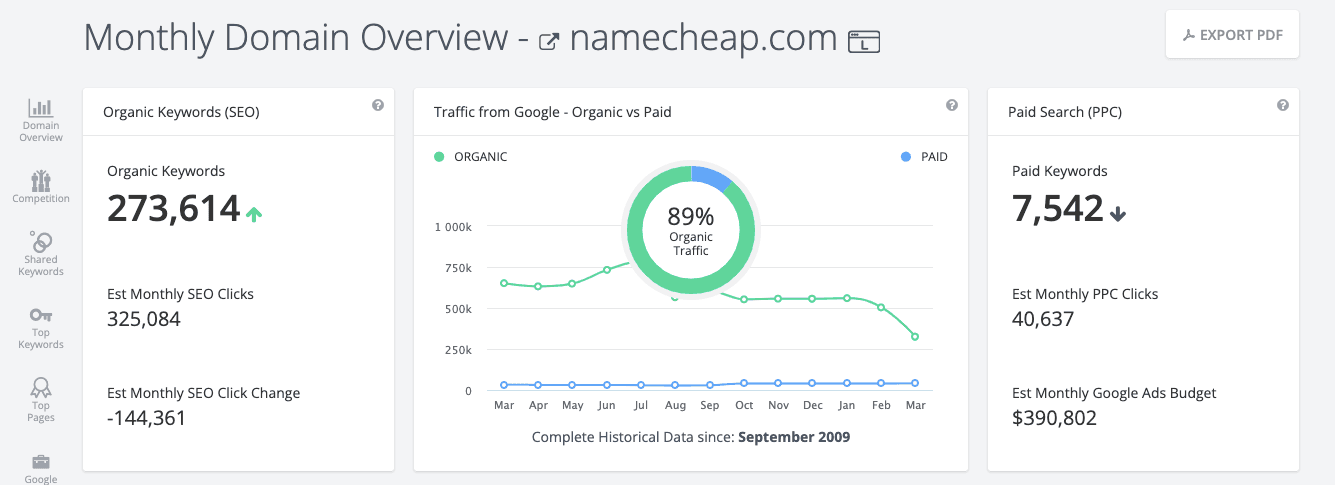
Social Media Marketing
If you’re not taking advantage of social within your digital marketing strategy, you’re missing out on a fast, inexpensive, and effective way to reach almost half the world’s population.
When it comes to marketing your business, there is no better platform than social media. With more than 4.2 billion active social media users across the globe, if you’re not using social to connect with customers new and old, you’re missing out on a huge opportunity. Here are just a few of the benefits of using social media for business.
Here Are Just A Few Of The Many Benefits
Reach Almost Half The World's Population
Social media is one of the most cost-effective ways to reach new customers. The expenses associated with advertising on platforms like Facebook and Instagram are minimal compared to traditional advertisements, and the audience reach can be huge!
Build Up Your Brand Awareness
If you want people to know about your company, social media is the place to start. In addition to sharing content about your products, you can also use these platforms to share more relatable information about your brand—things like what it was like when you started out or how many times you've moved offices since then! This will help people get to know and trust your organization."
It's Inexpensive
You can set up accounts on all kinds of different platforms for free, and you can post as often as you have time to do so. Second of all, it's effective: there are so many people out there—more than half the world lives online now—that you're bound to find some new customers among them if you're posting things they want to see or read. And finally, social media works fast. You can come up with an idea today and have people talking about it tomorrow!
Social Media Marketing Examples For Inspiration
Apple
“Shot on iPhone” is an ongoing social media marketing campaign by Apple to promote their smartphones. It includes online and offline ads, as well as original content shot on iPhones.
The campaign has been a huge success, with one of the biggest triumphs being the amount of user-generated content associated with the brand. The hashtag #shotoniphone has over 12.9 million posts on Instagram alone – a huge amount of free exposure that Apple hasn’t had to pay a penny for directly!
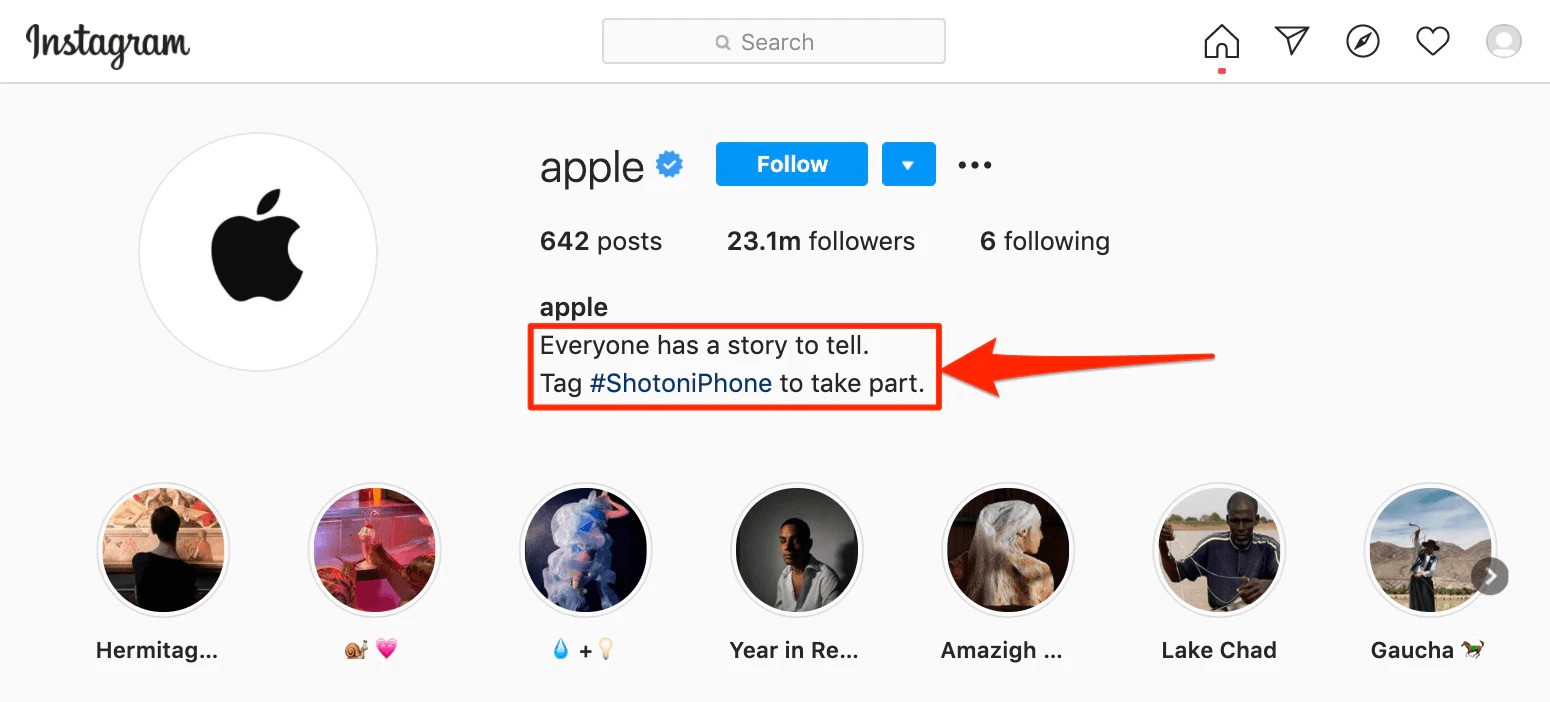
Oreo
If you ask us, Oreo was onto something when they decided to tap into the current collective obsession with horoscopes and star signs. Do you remember when they offered to analyze a fan’s most recent tweets and share a personalized “Oreoscope” with insights about their personality — and how it connected to one of the brand’s cookies?
It's true that there are only so many "Oreoscopes" out there, but receiving your own personal diagnosis from the brand still feels a little bit special and inspires users to share the results with their own followers, helping them understand themselves better.
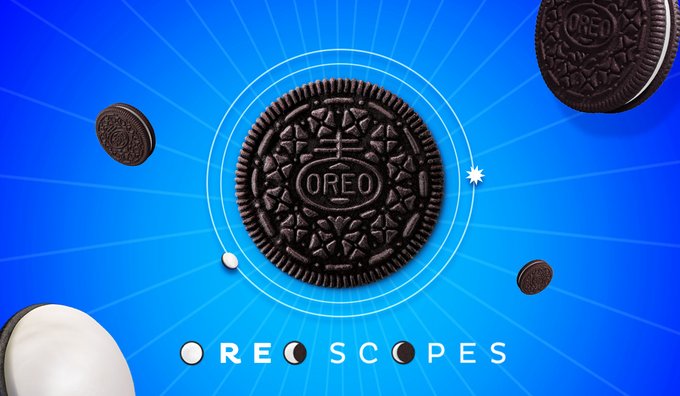
Influencer Marketing
Influencer marketing can be a powerful way to promote your business. In fact, 84 percent of consumers turn to social media before making a purchase decision. A recent survey by Collective Bias found that 70 percent of millennials are likely to make a purchase based on information they see on social media.
Another study by TapInfluence found that 90 percent of consumers find user-generated content more influential than brand-generated content when making purchasing decisions.
But it's not just about shelling out cash on popular platforms like Instagram— there are actually tons of other platforms out there in addition to Instagram? It's true! While Instagram is still the dominant force in influencer marketing, there are plenty of other networks gaining ground and reaching different audiences, which means it's worth taking a look at what they have to offer.
According to Adweek, the industry is set to reach $10 billion in worth by 2020. The article also mentions that Snapchat, YouTube, and TikTok all have their own sets of influencers with great reach among specific demographics. Video influencers for instance have been growing quickly on YouTube and Snapchat. The former has a large audience of teenage girls who are watching videos from YouTubers like Zoe Suggs (who also has a huge online presence on Instagram).
There's also a lot of potentials for brands to reach their target audience through TikTok videos. The social network has become increasingly popular among teenagers and young adults, which explains why some influencers like Baby Ariel have acquired such a large following (she has over 24 million followers on TikTok alone).
Benefits of Influencer Marketing
Brand Awareness
When you partner with influencers and send them your products to use, you’ll be able to tell their audience about your product. This helps build brand awareness and reach. Your target audience will see your product being used by someone they trust, which will help you establish credibility for your business.
Build Long Term Strategy
As you continue to work with influencers, you can build long-term partnerships with them. Many of them can enrich your content strategy by creating new content that you can share on social media as well as on your website or blog. They can also boost SEO by creating high-quality backlinks from their websites that link back to yours.
Cost-Effective
The influencer marketing process is cost-effective, especially when compared to traditional marketing methods like radio or television ads. It’s also time-saving because you don’t have to create separate campaigns for each different type of ad platforms like print, radio, and television.
Influencer Marketing Examples For Inspiration
Asos
In recent years, ASOS has stood out as a successful example of a growing fashion brand that is able to keep marketing costs low. Part of the reason for this achievement is the emphasis ASOS places on creating advocacy among its most influential customers. Each year, ASOS sets out to expand its social footprint, enhance social engagement, and drive web traffic through unique individual voices of the brand's influencers and fans. In a recent marketing campaign, according to Traackr, ASOS pulled in 3000 participants to spearhead its campaign.

The result?
More than 769 active members actively generated more than 7500 pieces of content and 200 blog posts. Each mention pushed out a positive sentiment about the brand. On Twitter and Instagram alone, the brand's reach is estimated at 12 million—and the days on which they post tend to be the days with their highest sales!
Adidas
Adidas is a brand that has built its reputation on providing high-quality athletic wear. To continue to be as successful as they are, Adidas knew that it was important for them to keep in touch with their target audience.
They realized that the best way to do this was through Instagram influencer marketing. Nearly 70% of Instagram users are aged below 35, and the majority of Adidas' customers are younger people.
They used influencer marketing on Instagram to reach out to a younger audience. They partnered with influencers like Iga Wysocka and Selena Gomez and encouraged people to post pictures of themselves wearing Adidas products using the hashtag #MyNeoShoot on Instagram. They offered a chance for the winners to get featured on Adidas’ website.
The results were fantastic! They got an impressive 12,000+ entries for the contest alone, along with a huge number of mentions of their hashtag. Their follower count increased by 41,000 as well!
Marketing Automation
Marketing automation is a powerful tool that you can use to help you reach your goals. But what exactly is marketing automation? At its core, marketing automation is just the use of an omnichannel software platform to consolidate, create, and automate a variety of related marketing initiatives. On average, 51% of companies are currently using Marketing automation. With more than half of B2B companies (58%) plan to adopt the technology.
These platforms help marketers mechanize repetitive processes to provide (ironically) greater personalization, improve efficiency, increase key performance indicators, and drive more leads and greater revenue. In addition to an omnichannel view of all things marketing, these platforms typically provide analytics and reporting to help you make better decisions about how to optimize your current campaigns as well as a variety of ways to connect with customers (e.g., email automation, website personalization).
One example would be MailChimp: they offer some basic tools like email templates but don't have advanced features like A/B testing or dynamic content creation—features that would prove useful when targeting.
Marketing Automation Examples For Inspiration
Efficiency
Marketing automation software can automate repetitive tasks and free up youThe Ultimate Guide to Writing SEO Content in 2020r time. You can scale your marketing efforts while still focusing on the customer experience.
Marketing And Sales Alignment
Every company’s goal is to increase their sales, right? Marketing automation allows marketers to align their marketing activities with the sales department so they both can focus on increasing revenue.
Increase Conversion Rate
You can easily capture leads with a form builder and landing pages that are personalized for every lead and customer. Once you have identified your ideal customers, you can automate the lead nurturing process with email campaigns that are personalized to each prospect’s needs and goals.
Accurate Reporting
You can track your marketing efforts from start to finish with marketing automation analytics. You will see where leads are coming from, what is working for your lead gen strategy, and where your conversions are happening. You will be able to optimize and improve your campaigns based on accurate reporting data. Check out these examples of marketing automation analytics reports that give you the information you need in easy-to-digest formats.
Personalized Marketing Strategy
Marketing automation gives you the ability to create one-to-one customer journeys based on customer behavior, engagement, interests, etc
Marketing Automation Examples For Inspiration
Buffer
When Buffer's Pablo app was ready for the next iteration, they needed to test out some new features. Instead of performing a formal beta test, though, they used marketing automation to identify their most engaged users and ask for their feedback. Buffer, who manages over 3 million scheduled posts per week, first identified the top 50 most recent Pablo users that had also interacted with a Buffer post in the previous two weeks as well as at least one other user.
They then sent each of these users an automated message via Intercom asking them about their experience using Pablo and what they liked or disliked about it. The automated message was sent within 12 hours of the user signing up for Pablo—allowing Buffer to get their feedback while still fresh in their minds.
The messages were sent by a member of Buffer's customer success team—and if the user responded with any pain points or issues they were having while using Pablo, they were then prompted to talk directly to a member of the customer support team via chat.
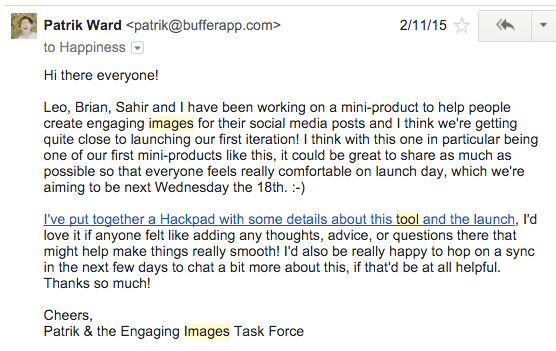
Source: buffer.com
During this chat, members of the support team would enable new features that hadn't yet been released and ask the user for their opinions on them. This gave Buffer instant feedback from their most engaged users—and allowed them to then make tweaks based on actual user experience.
Wall Street Journal
The Wall Street Journal has released a new chatbot in partnership with Facebook Messenger. The bot is designed to help users stay on top of big news, stock quotes, and other financial information.
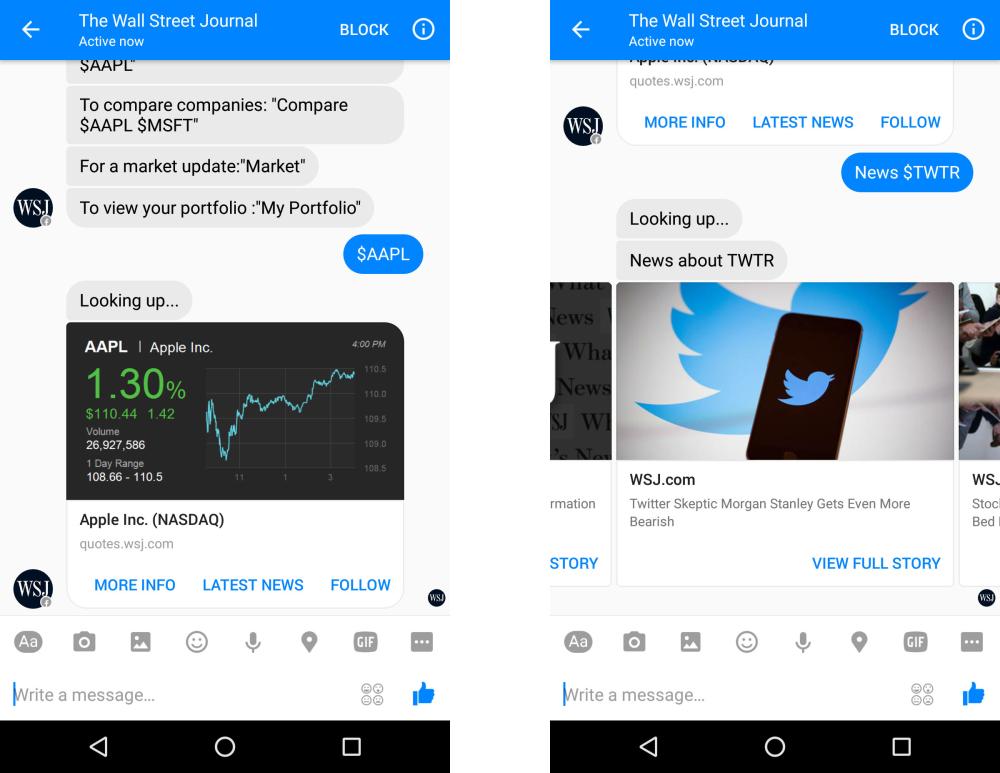
Image Source: socialmediatoday.com
To use the bot, simply click on an image of the Wall Street Journal logo inside Facebook Messenger. You'll be taken to a text box where you can type commands that will return relevant information. For example:
- "What's the Dow doing right now?"
- "How are tech stocks doing today?"
- "What's the latest for Apple?"
You can also customize alerts - simply type in some basic commands and you can get company information, key financial metrics, and live stock quotes, along with the latest news posts.
A/B Testing
You may have heard of A/B testing and wondered how it works and if you should use it. This blog will help you understand the basics of what A/B testing is and how it can help improve your business. A/B testing is a simple concept: You create two versions (A and B) of a website or advertisement with one variable changed in each version, such as headline text on an article page, colors or images used on product pages, or calls-to-action on landing pages, and then test which version gets a better response rate (clickthroughs).
The idea behind split testing is that if there's even one small difference between your two campaigns, one will perform better than the other -- and when it comes down to finding out what works best for your business, every little bit counts! With A/B testing it is to identify which version of the website or campaign produces the greatest ROI for your business.
Let's Start With Three of The Most Notable Benefits
Improved Content Engagement
When you A/B test your content, you can see what engages your audience more, and then tailor your content strategy to be more engaging. When you do this, you'll get more clicks on your content, and that will increase the amount of time people spend on it (which is called "time on page"). This means that your audience is engaged with what they're reading. That's an amazing thing!
Reduced Bounce Rates
If you have a high bounce rate, it means that people are clicking away from your site before they've even gotten started. If you're using A/B testing to tweak both the layout of your website and the content on it, you can experiment with different strategies to find out which one keeps your visitors on the page longer. When you keep them there longer, they'll want to stick around—and they won't bounce as quickly.
Increased Conversion Rates
A/B testing can help you improve your conversion rates by allowing you to test two versions of a web page or email campaign against each other—and then analyze the results to see which version performs better. For example, if you have a sale on a specific product, you can test whether your sales increase when the sale price is bolded in red or blue.
This allows you to get more conversions from your sale and also helps you determine what kind of formatting works best for future campaigns.
Better Customer Satisfaction
When you customize your marketing with A/B testing, you're making your customers feel like they matter—which they do! You're taking steps to make sure that they see your content in a way that's most likely to appeal to them. This makes them feel valued as customers and leads to increased satisfaction and loyalty.
A/B Testing Examples For Inspiration
Unbounce
Unbounce's marketing team ran a fun test recently: would you rather receive an ebook if you gave us your email address, or if you tweeted about the product?
At first glance, it seems like an easy choice—just tweet and gets it! But there are actually quite a few reasons why a marketer might want to ask for an email address instead (even though it's more work on the part of the person signing up).
For example, getting people's emails provides marketers with a list of potential customers in the future. Another bonus is that people who give their emails have already shown that they are willing to invest more time into your product than those who merely tweet. Marketers can also use this information to identify potential leads. With all this information in mind, Unbounce decided to test out which option was better for them. They tested two different landing pages: One asked users for their emails, and one asked them to send out a tweet.
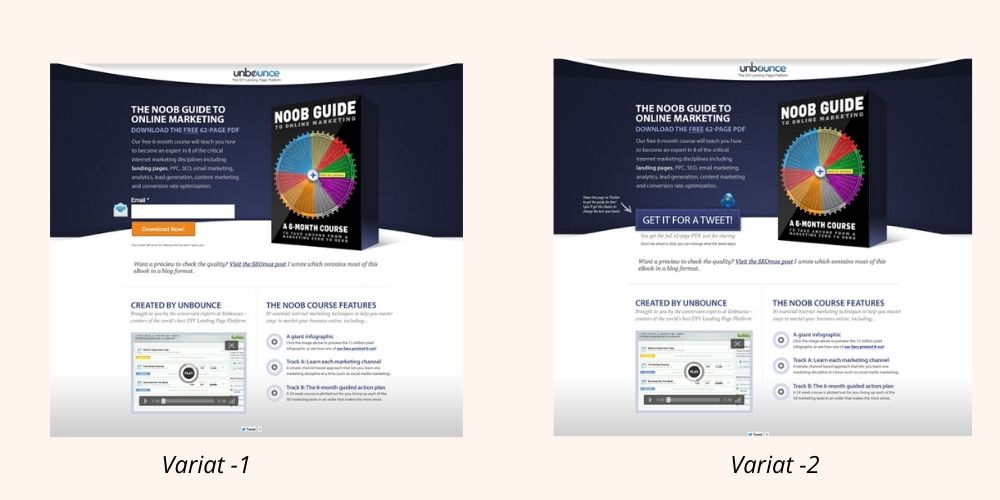
In the end, people far preferred giving out an email address. The email landing page had a 24% conversion lift over the Tweet-to-Download landing page!
Community Building
The word “community” shows up a lot in the marketing and tech space. In fact, it’s actually become a buzzword that has been given a variety of different meanings. But true community is not just about creating a forum for your customers to discuss your products and services. It’s not even about having a social media presence or hosting events for your brand.
True community happens when brands give their customers value, whether they’ve made a purchase or not. This means that when you create a community around your brand you are giving customers value from the get-go – whether they have spent money with you or not. Whatever community-building strategy you decide to use, here are five reasons why community building should be part of your marketing strategy:
In-Expensive Yet Powerful Marketing Strategy
Community building costs much less than traditional advertising and sales approaches, but it can still have a huge impact on your business. This is because it's focused on creating loyalty and trust with customers, which can lead to better customer service, stronger brand awareness and recognition, and an increase in the number of returning customers.
Build Relationships With Customers
Because community building fosters positive relationships with customers, it can help improve their overall experience with your brand. In fact, 83% of consumers say they need some level of customer support when making a purchase decision—and if you're not offering that kind of support for them early on in their relationship with your company, one of your competitors will!
High Customer Retention Rate
When people feel like they're a part of something special, they'll want to keep coming back for more! As such, building an online community around your business will help increase customer retention rates by giving customers another reason to return again and again (even if it's just for daily updates on Facebook).
Build Strong Brand
People like interacting with other people online—and when there's an actual human behind every post or tweet, it makes them want to buy from you more than if it was just some faceless company doing all the talking.
Community Building Examples For Inspiration
Love Your Melon
Love Your Melon was founded in 2012 by two college students. It all started as a small idea, which grew into a huge success. Their mission is to put a hat on every child battling cancer while helping those who are in need.
The company has been able to give over 3 million dollars to non-profit organizations that are involved in the fight against pediatric cancer, and they have also helped provide financial support for families and children who are in need. In addition, they have been able to donate over 100 thousand hats to children who are battling cancer.
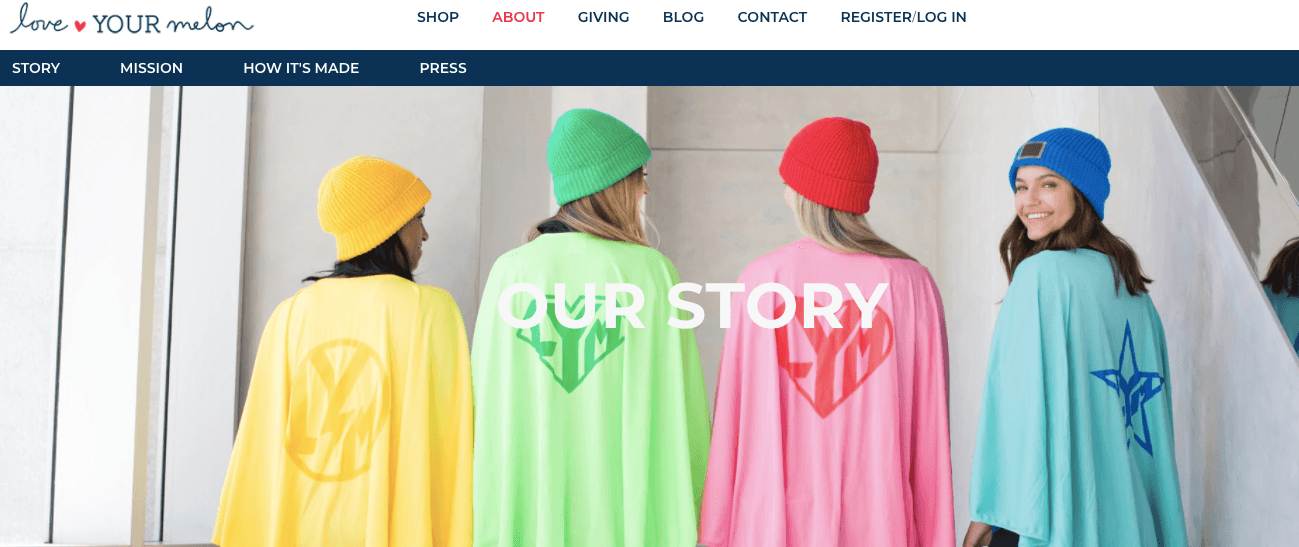
The business has grown exponentially since its founding, and now you can find its products at over 25 hundred college campuses across the country. They have also partnered with more than 200 colleges and universities, which helps them spread awareness about the company's mission.
It is truly remarkable what such a small idea can do for the community.
Viral Campaigns
We've all seen them: the videos that go viral. You know, the ones you see all over your social media feeds because nearly everyone you know is sharing it—and that's no accident. Viral marketing is a sneaky-smart technique that, when done correctly, can help you generate interest in your brand or product through messages that spread quickly from one person to another.
it's something that spreads easily and fast—and when it hits the right nerve with its audience, it can be unstoppable. This effect happens because users themselves choose to share the content. The idea behind viral marketing is pretty simple: put something out there that people will want to share. If you're successful at this, you'll get users to go out of their way to help you spread your message far and wide—for free!
Examples of Viral Marketing Campaigns That Hit The Mark
ALS Association
How did you spend your summer? Maybe you slid into a pool, or lounged on a beach somewhere, or relaxed at a resort?
Whatever you did, we're willing to bet it wasn't as fun as the millions of people who participated in the Ice Bucket Challenge—and helped raise over 115 million dollars for The ALS Association.
It was the summer of 2014 when this challenge took off, and it was very simple: pour a bucket of ice water over your head and nominate three other people to do the same. You had 24 hours to complete the challenge, after which you would be considered "a chicken."
The result was an unprecedented fundraising success. Everyone from Oprah to Bill Gates got involved—and even Donatella Versace took part! The challenge was all over social media—including Facebook. On Facebook alone, 28 million people posted Ice Bucket Challenge videos and they were viewed 10 billion times! These videos drove more than 100 million visits to The ALS Association's website.
Omnichannel marketing
Omnichannel marketing is when you use multiple channels to reach potential customers. However, the key difference between multichannel and omnichannel marketing is that with omnichannel marketing, the customer experience across all of these channels is consistent. Omnichannel marketing gives customers a seamless experience whether they're interacting with your brand through paid advertising, social media or an email newsletter.
If you want to start taking advantage of omnichannel marketing for your business, here are a few tips:
Figure out which channels make sense for your business as well as which ones your competitors are using. For example, if you're selling products online and have a small team, it might not make sense to invest in a dedicated customer service phone line or physical storefront; however, it would be worth investing in an email newsletter and social media presence through which customers can contact you.
Be consistent in how you present yourself on these different platforms. For example, do you use an exclamation point at the end of every sentence in your blog posts? Then don't suddenly write bland copy for your Instagram captions. It's important to create a distinct style that reflects your values so that people recognize who they're dealing with wherever they come across your business!
Paid Search Advertising
Paid search ads are a major part of digital marketing. They’re a way to drive more traffic to your business by placing paid advertisements on search engines, including Google, Yahoo!, and Bing. Paid search ads show up in sponsored links at the top and side of organic search results. If you bid on the right keywords, have an enticing ad copy with a clear call-to-action, and your landing page is optimized for conversions, then you can expect some great results.
If you want to implement PPC into your digital marketing strategy but don't know how to get started, here are some best practices:
Create a separate landing page for each keyword/product you want to highlight in each ad.
Make sure that every page has a descriptive URL that includes target keywords.
Use target keywords within headlines and subheads on the landing pages as well as in body copy (1%-2% keyword density).
Be sure to use target keywords in image alt text too; this will help improve image search rankings.
Live video streaming
The capabilities of live video streaming are constantly being expanded. Through it brands can now reach and engage their audiences in real time, from across the globe, on a device of their choice. Facebook Live, for example, has made it easy for any brand to live stream directly from its own page.
Not only is this a highly effective way to grow your audience, but you can also use it to announce new products or service updates and even hold Q&As with your followers.
While this is certainly useful for any business looking to boost engagement (see our blog on social media marketing), there are also some more specific examples of how different types of brands can benefit from live streaming technology:
E-commerce: If you have an online store, live streams are an excellent way to generate buzz around new products or special deals and attract more sales
Education: Educators and educators-to-be can take advantage of face-to-face interaction through online learning platforms like preply.com
Events: Rather than spending time organizing the logistics of your event’s attendance in person (and later posting videos as promised), why not give attendees the chance to watch your conference or workshop in high definition from the comfort of their homes?
Build Marketing Workflows That Work for you

No credit card needed. Instant access. Try now for free
Digital First AI empowers marketers with AI-driven tools to centralize data, build personalized strategies, and execute campaigns seamlessly.
Generate content, automate workflows, and outpace competitors—all in one secure platform.
AI-Powered Data Room: Centralize and analyze unstructured data for actionable insights.
AI Strategy Canvases: Generate 26+ strategic canvases for tailored campaigns.
Advanced Research Tools: Conduct real-time market and competitor research.
AI Content & Visuals: Create high-quality copy and visuals with leading AI models.
Drag-and-Drop Workflow Builder: Design and automate custom workflows effortlessly.
Pre-Built Templates: Jumpstart campaigns with customizable templates.
Over 15,000 marketers and entrepreneurs from around the world are already reaping the benefits. Enjoy a free trial without any commitments!

